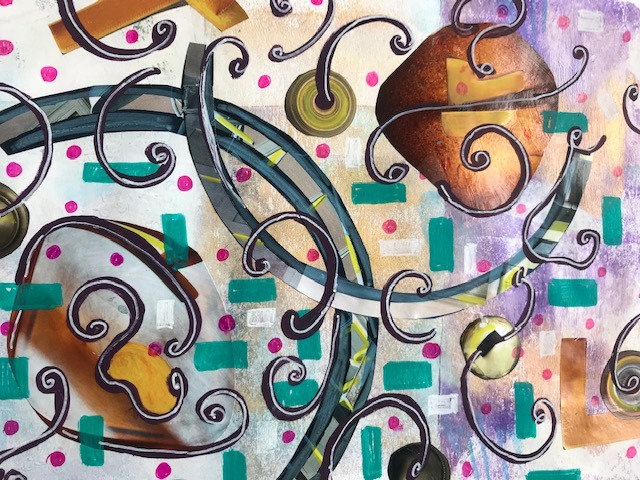
Mixed Media Basics


Are you keen to go on a mixed media art journey? You will need some basic materials. While it’s easy to get bedazzled by so many enticing art materials (and sometimes eye watering prices!) at your local art shop, it is always best to buy what you need AFTER you have figured out you need it.
Try new things, but experiment with what you have first. Buying too much stuff all at once just causes confusion and for many people- paralysis!
I have really got into filling sketchbooks with collage experiments lately. They are a cheaper way of making art without having to buy too many substrates. They don’t take up too much room either. If you don’t have a separate art space, they are perfect for kitchen tables and other small spaces.
They also encourage experimentation, rather than perfection. Believing in perfection is fools’ gold for artists.
Remember: THERE IS NO PERFECT TRANSITION FROM WHAT WE SET OUT TO DO AND WHAT ACTUALLY HAPPENS.
I’d like to share with you the basics I use all the time in my mixed media practice.
• Substrates are the surfaces you use to work on. They can be a canvas, a board, plywood, paper, cardboard etc
• Acrylic Paints Your budget will dictate your choice of paints but I find cheaper paints like Pebeo and Reeves do pretty well in mixed media work. A cheaper paint will have less pigment, but if you are just starting out, these are better for experimenting. Get a range of colours and a big container of white. White will mix your colours and give you a bigger range.
• Brushes Don’t splash out on expensive brushes for mixed media work but a range of sizes is a good idea. Use the cheapest brushes for gluing and just keep them for that purpose.
• Glue This is something I am fussy about. I recommend investing in a container of Gel Medium Gloss (Golden) as over the years I’ve found this the most reliable. It is certainly the glue I use for work I plan to sell as I could think of nothing worse than a sold collage artwork starting to peel! As a gel medium this product can also be mixed with paint to give a thicker, richer affect.
• Papers Mixed media artists often use paper for collage although some use other materials like beads and fabric. I use tissue paper, magazine pages (matt, not gloss) book pages and paper I have gelli printed.
• Scissors Although tearing your collage papers is a great technique, you will need a pair of sharp small scissors for cutting things out.
• Gelli pad For some people it is a “nice to have” but you can achieve such interesting results with this product I feel it’s worth the initial investment. Start with a small one. There are heaps of YouTube videos on how to use them but keep away from the image transfer ones until you are a bit more experienced.
• Stamps, stencils, found objects are a must for printing with the gelli pad or putting directly on your substrate.
• Pens, crayons Pens are good for making marks, drawing lines and filling in small spaces. I love Posca and Molotow pens because they are paint pens filled with acrylic paint. You can also buy water- based ink pens and gel pens. Brush pens are great too because they soft like paint brushes. Crayons add depth and texture.
• Social media ban Not an actual technique but good advice! When you are working, don’t use social media for ideas. Let YOUR ideas come to you. It is your process, your vulnerability and short comings, your successes, YOUR VOICE!



